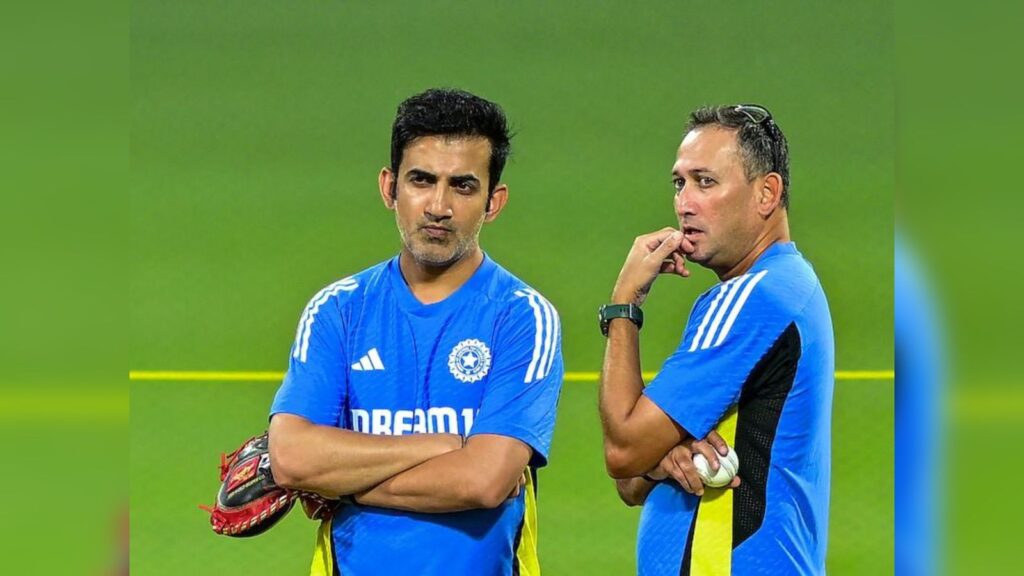
Ashok Namboodiri
When the BCCI announced India’s squads for the upcoming Australia tour, it wasn’t just a cricket selection; it was a statement of intent. Shubman Gill captaining the ODI side, Suryakumar Yadav leading in T20Is, veterans Rohit Sharma and Virat Kohli returning, Jasprit Bumrah and Ravindra Jadeja rested — every call reflected a larger strategy. It was not about pleasing everyone. It was about building for the future.
A.G. Lafley, the legendary Procter & Gamble CEO, said: “Strategy is about making choices to win.” In cricketing terms, this selection is India’s “Playing to Win” moment — bold, deliberate, and deeply long-term. It necessitates making tough calls and eschewing the urge to please everyone.
Lafley’s framework rests on two deceptively simple questions: Where will we play? How will we win? Apply that to this Indian team and the answers emerge clearly. The “where” is the future …the 2027 World Cup cycle and the next decade of Indian cricket. The “how” lies in nurturing a leadership group that can thrive in diverse conditions, integrating youth with experience, and managing physical and mental workloads with precision.
Choosing Gill to lead in ODIs isn’t just a reward for promise. It’s a calculated bet. He has temperament, technique, and time on his side. Surrounding him with senior pros like Rohit and Kohli ensures mentorship, not displacement. It’s akin to a corporation promoting a high-potential young executive while keeping seasoned board members as stabilisers. The T20I squad under Suryakumar follows the same logic: create multiple leadership pipelines, not a single dependency.
Lafley often reminded CEOs that real strategy is about tough trade-offs. At P&G, he pruned more than 100 brands to focus on the few that defined the company’s edge. The Indian selectors have done something similar. Resting Bumrah may hurt short-term optics, but it protects a generational asset. Excluding Jadeja from the ODIs signals a willingness to experiment with fresh combinations rather than leaning forever on comfort. Every enterprise that endures knows this truth: saying “no” is as strategic as saying “yes.”
There’s another Lafley insight that applies here….capabilities define success. At P&G, it was consumer insight and product innovation. For India, it’s depth, adaptability, and bench strength. Giving exposure to Nitish Kumar Reddy, Harshit Rana, or Washington Sundar in foreign conditions is not just squad padding …it’s future-proofing. Building muscle memory now ensures readiness when the next big tournament arrives.
Equally telling are the selections of Yashasvi Jaiswal, Dhruv Jurel, and Shreyas Iyer, each representing a different dimension of India’s future blueprint. Jaiswal embodies the new Indian batting mindset …fearless, aggressive, and unburdened by hierarchy. His inclusion reinforces the intent to back youthful audacity as a sustainable asset, not a passing experiment.
Jurel, meanwhile, is a nod to the next generation of wicketkeeper-batter — calm under pressure, technically sound, and tactically sharp. Investing in him now is akin to grooming a high-potential manager before the role becomes vacant. Iyer’s presence as vice-captain balances this youthful core with experience. He bridges eras, offering stability in the middle-order and leadership maturity in a dressing room that’s evolving fast. Together, the trio reflects a strategic equilibrium — building tomorrow’s spine while preserving today’s balance.
Of course, there will be criticism. In corporate life, boards face investor unrest when they pivot; selectors face social-media outrage when they drop a star. But leadership is rarely about popularity. It’s about clarity of purpose, and the courage to stay the course when the noise gets loud.
The Australia series, then, is more than a bilateral contest. It’s a laboratory for the next phase of Indian cricket where decisions are made not for applause, but for advantage. As Lafley would say, you don’t play to participate; you play to win.
Follow Revsportz for latest sports news





